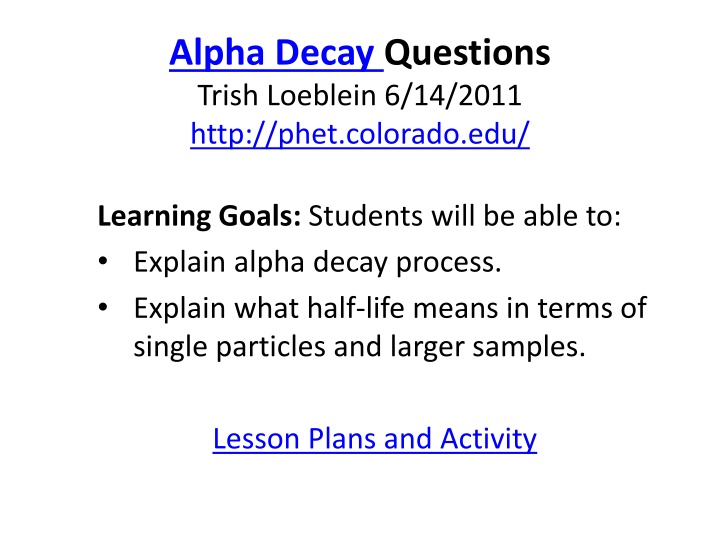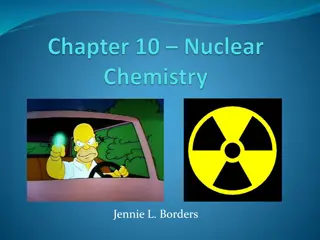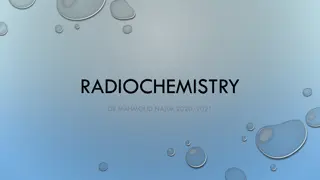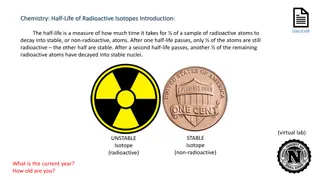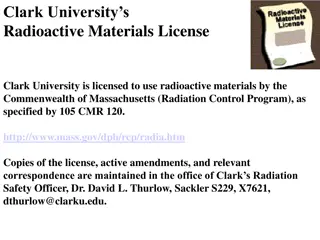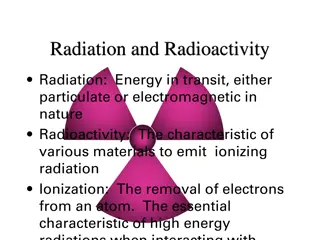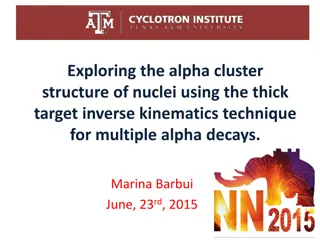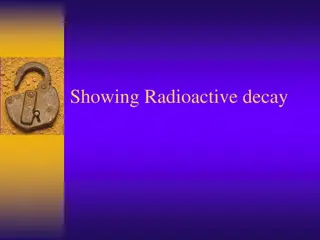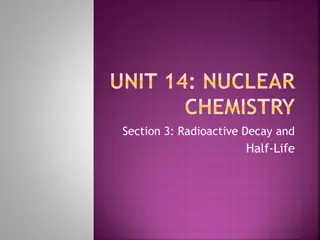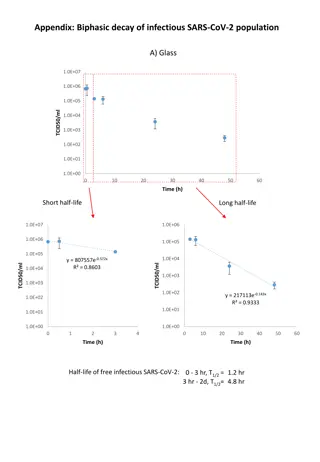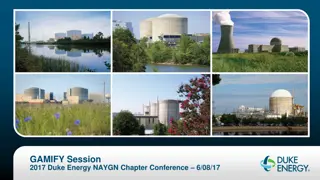Alpha Decay and Half-Life Concepts
In this content, students learn about the alpha decay process and the significance of half-life in radioactive decay. Questions and explanations regarding specific decay reactions and predictions based on half-life values are provided to enhance understanding. The content includes images and scenarios to aid comprehension of these fundamental concepts in nuclear science.
Download Presentation

Please find below an Image/Link to download the presentation.
The content on the website is provided AS IS for your information and personal use only. It may not be sold, licensed, or shared on other websites without obtaining consent from the author.If you encounter any issues during the download, it is possible that the publisher has removed the file from their server.
You are allowed to download the files provided on this website for personal or commercial use, subject to the condition that they are used lawfully. All files are the property of their respective owners.
The content on the website is provided AS IS for your information and personal use only. It may not be sold, licensed, or shared on other websites without obtaining consent from the author.
E N D
Presentation Transcript
Alpha Decay Questions Trish Loeblein 6/14/2011 http://phet.colorado.edu/ Learning Goals: Students will be able to: Explain alpha decay process. Explain what half-life means in terms of single particles and larger samples. Lesson Plans and Activity
1. If you read a test question that says: Hg-202 undergoes alpha decay to Pt-198. What does that tell you? A. A particle that has a mass of 4 is given off B. A particle that has a mass of 4 is absorbed emitted is another way to say given off
Hg-202 undergoes alpha decay to Pt-198. 2. What else do you know? A. The particle emitted also has no charge B. The particle emitted also has a charge of 2 C. The particle emitted also has a charge of 4 D. The particle emitted also has a charge of -2 Alpha particles are 2 protons and 2 neutrons represented as
Hg-202 undergoes alpha decay to Pt-198. 3. What would the reaction look like? 202 80 Hg 202 202 80 Hg 202 80 Hg 80 Pt + 4 198 80 Pt + 4 198 78 Pt + 4 2 A. 2 B. 2 C. Remember mass and charge must be equal on both sides of reaction
4. If you know the half-life of a substance is 50 seconds and the initial amount can be represented as which can you know for certain? A. After 50 seconds the representation would be B. After 50 seconds the representation could be C. If the sample size is small, it could be very different after 50 seconds. D. A and C E. B and C
5. If you know the half-life of a substance is 50 seconds and the initial amount can be represented as what would you predict the graph to look like after 150 seconds? D nothing would be left B C A
